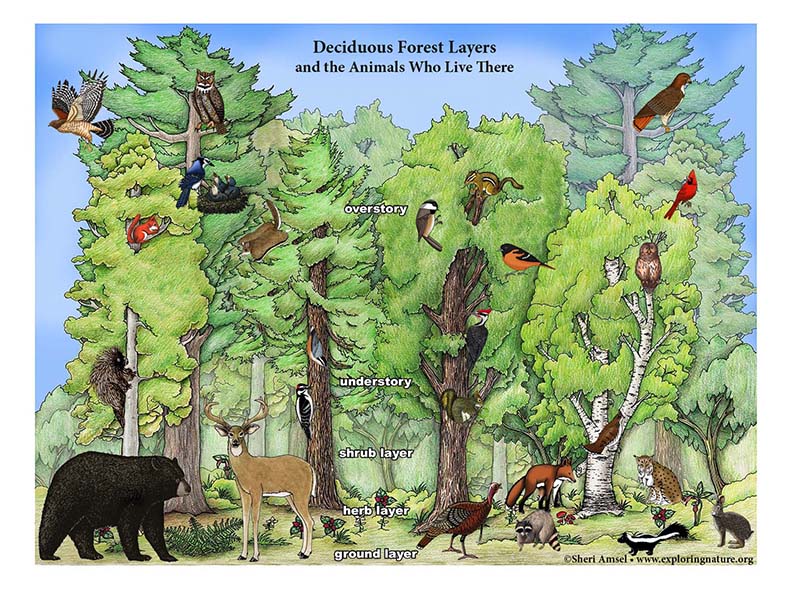

Giant posters are great visual aids to enhance educational topics. In addition to species identification, they can represent 2-D Models for science processes and progressions. Print out the 8.5 x 11" sections and piece them together into giant, eye catching posters for the classroom or other educational displays. The finished poster size is 17" x 22".
This bundle includes (11 pages to download and print):
1) Two 4-piece color posters – one with animal outlines and one without, ready to be assembled.
2) Two pages of animals to be cut out and pasted onto the color posters (25 color animals).
3) One color mini-poster of the animals in the forest (as a guide).
Materials Needed:
About 11 sheets of heavier (or card stock) paper, scotch tape (invisible tape), glue stick, scissors, markers, colored pencils or crayons.
Instructions:
1) Print 4-piece color poster background on heavy paper (animal outline version is for K-2). Then trim edges on dotted lines and tape together.
2) Print two sheets of (25) animals on heavy paper and cut them out on the dotted lines (animals are not to scale so we could include songbirds).
3) For younger students, paste cut out animals into the outlined locations on the poster. For older students, use the background poster with no outlines and use your knowledge of forest layers to paste the animals in the correct places where they are found in the forest.
4) Check your work on the small poster included in the bundle.
When you research information you must cite the reference. Citing for websites is different from citing from books, magazines and periodicals. The style of citing shown here is from the MLA Style Citations (Modern Language Association).
When citing a WEBSITE the general format is as follows.
Author Last Name, First Name(s). "Title: Subtitle of Part of Web Page, if appropriate." Title: Subtitle: Section of Page if appropriate. Sponsoring/Publishing Agency, If Given. Additional significant descriptive information. Date of Electronic Publication or other Date, such as Last Updated. Day Month Year of access < URL >.
Amsel, Sheri. "Forest Layers and Animals - Giant Color Poster Building Activity" Exploring Nature Educational Resource ©2005-2024. December 13, 2024
< http://www.exploringnature.org/db/view/Forest-Layers-and-Animals-Giant-Color-Poster-Building-Activity >

